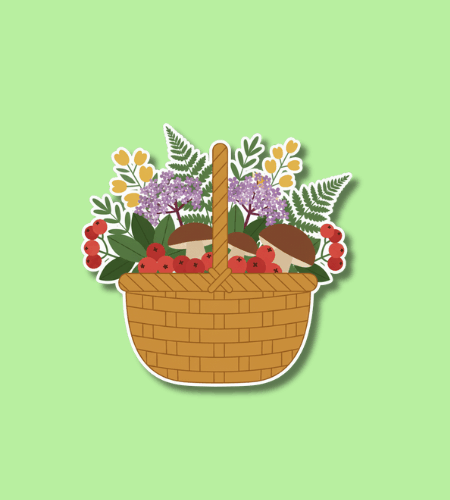Wild Foods Day, observed every year on October 28, is a celebration of the foods that grow naturally in the wild—from berries and herbs to mushrooms and edible flowers. It’s a day to tune into nature’s pantry and appreciate the flavors and abundance beyond the grocery aisles.
History of Wild Foods Day
The roots of Wild Foods Day trace back to the mid-1970s, when interest grew in foraging, wild edibles, and reconnecting with natural food sources. One early influencer was Euell Gibbons, whose 1962 book Stalking the Wild Asparagus helped popularize the idea of gathering wild plants for food. Over time, the day came to be marked on October 28th, inviting people to explore foraging, learn about wild foods, and reflect on our relationship with natural sources of nourishment.
Why is Wild Foods Day important?
I like to think of this day as a gentle invitation to rediscover what nature quietly offers — and to reflect on how much we’ve come to rely on processed, packaged, distant food systems. By stepping outside and noticing edible plants or mushrooms, we awaken a sense of wonder about our surroundings and our place in the ecosystem. On Wild Foods Day we get reminded that food isn’t only what appears in rows in supermarkets; it can grow wild, near, often overlooked.
At the same time, the day opens a conversation about sustainability, biodiversity and food culture. When we forage responsibly, we learn to respect the land, support local ecosystems, and shift the lens from consumption to connection. It invites us to ask: what do we lose when we disconnect from where food comes from?
Here are five simple reasons why this day holds meaning:
- It encourages noticing edible plants around us that we might never have considered.
- It gives appreciation for how humans and nature have been intertwined in food gathering for millennia.
- It helps promote more sustainable ways of sourcing small bits of food, reducing waste and travel.
- It reminds us that the “wild” isn’t separate from our daily lives — it can be just beyond the path we walk.
- It fosters respect for indigenous or traditional knowledge of wild edibles.
How to Observe Wild Foods Day
If you’d like to honor Wild Foods Day, you don’t need to become an expert forager overnight. One simple and meaningful way is to go for a walk in a park, woodland, or even your neighborhood, with open eyes for plants, herbs, berries, or mushrooms. Bring along a guidebook or app and approach with curiosity rather than haste — making sure safety and legality come first. Then, if you find something edible (and you’re confident about it), bring it into your kitchen. Maybe turn wild herbs or berries into a tea, jam, or salad. Share the results with someone and talk about the experience.
Another way is simply to cook something with a wild‑sourced ingredient (even if store‑bought wild rice or seaweed), invite a friend, and talk about how we treat food, land, and nature. You might host a mini “wild food tasting” at home, comparing standard vs wild versions of something (like wild blueberries vs cultivated) and chat about what it feels like to taste something less common.
Here are five practical ideas to embrace the day:
- Take a short walk with a small basket and look for wild edible plants (with a guide or app for safety).
- Prepare a simple dish at home using a wild ingredient (wild garlic, rose hip jam, wild mushrooms) and share it.
- Read up or watch a short video about the practice of foraging and learn one new edible plant.
- Invite a friend to try something wild‑foraged or wild‑sourced and compare notes.
- Reflect (in a journal or discussion) on where your food comes from and whether you sometimes forget the wild sources behind it.
Wild Foods Day Dates Table
| Year | Date | Day |
|---|---|---|
| 2025 | October 28 | Tuesday |
| 2026 | October 28 | Wednesday |
| 2027 | October 28 | Thursday |
| 2028 | October 28 | Saturday |
| 2029 | October 28 | Sunday |
Subscribe to our newsletter and never miss a holiday again!

